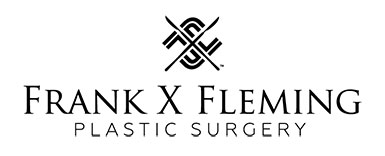Women who are unhappy about having large breasts and/or want to treat symptoms such as back pain and poor posture, may benefit from reduction mammoplasty (breast reduction), during which fat, glandular tissue and skin are removed from the breasts. The resultant smaller breasts increase patient comfort, and look more in proportion to the rest of the body. Ideal candidates for reduction mammoplasty are women with oversized breasts that are causing medical problems, low self-esteem, and/or physical or social discomfort.
The Breast Reduction Procedure
The surgery is performed under general anesthesia. Depending on the technique used and the individual case, it takes from 2 to 3 hours to perform. The incision that is made is a keyhole shape, centered around the areola and extending to the sice of the breast parallel to the lower crease. The final scar is shaped like an anchor.
Recovery from Breast Reduction
After a breast reduction, patients typically experience soreness, swelling and bruising for several days. Bandages are removed after 2 days, and replaced with a surgical bra. Physical activity should be limited for 1 to 2 weeks, while exercise and other strenuous activity should be avoided for at least 4 weeks. Stitches are removed after 2 to 3 weeks, at which point most patients return to work and other regular activities. The results of reduction mammaplasty are noticeable immediately after surgery. As swelling and bruising subside, the breasts’ appearance improves. Scars fade with time, and usually cannot be seen when a patient wears a bathing suit or low-cut top.
Read what our patients are saying!
” Why I chose Dr. Fleming was for the one reason, I work with him. He’s an excellent doctor, his bedside manner is wonderful, and he pays total attention to what you want. When my husband and I came into his office, he was just a wonderful, wonderful man. I’ve been looking into a breast augmentation for many years. I researched outside of the area, Seattle, Spokane and I chose Dr. Fleming who is a board certified physician in plastic surgery here in the Tri-Cities. And for my financial needs he met all those, I was able to stay here in the Tri-Cities, in my own home, I didn’t have to stay in a hotel.
I feel Dr. Fleming is very knowledgeable, he is very caring about whatever he is doing, from augmentation, to facelifts, to liposuction, he is smart and focused with what he’s doing in the operating room. If you want to go, go and do it. It’s just something you should do if you need to. It’s affordable, it’s here in the Tri-Cities and Dr. Fleming’s wonderful, he’s the best. He’s very approachable, he’s very nice, his staff is great, he’s a wonderful doctor. “
Click here to read more reviews.
Is a breast reduction covered by insurance?
If the breasts are abnormally large and causing neck pain or back pain, this procedure is typically covered by most insurance plans. Depending on the particular insurance provider, eligibility factors may include the amount of breast tissue to be removed, and whether more conservative steps to reduce pain have been attempted.
How Long Do The Results Of a Breast Reduction Last?
The smaller breasts that result from reduction mammaplasty are permanent, but breasts are still subject to the effects of aging, gravity, changes in hormone levels, and weight gain/loss.
Risks Of Reduction Mammaplasty
In addition to the risks associated with any surgery, risks related to reduction mammaplasty, depending on the technique used, include the following:
- Loss of sensation
- Scarring
- Asymmetry
- Excessive firmness
- Inability to breast-feed
- Loss of skin/tissue where incisions meet
- Partial or total loss of areola and nipple
Does The Procedure Leave Scars?
Reduction mammaplasty leaves permanent scars on the breasts. Scars appear lumpy and red for several months after surgery, but fade with time. The larger the incision, the more noticeable the scar.
Does Having Breast Reduction Surgery Eliminate The Possibility Of Breast-Feeding?
The ability to breast-feed can be affected by reduction mammoplasty. Risk depends on the type of incision used to perform the procedure. Traditional reduction mammaplasty uses a large, anchor-shaped incision that removes a significant number of milk ducts, which can affect the ability to breast-feed. Most studies indicate that 50% of patients who have had a breast reduction will be able to breast feed.

